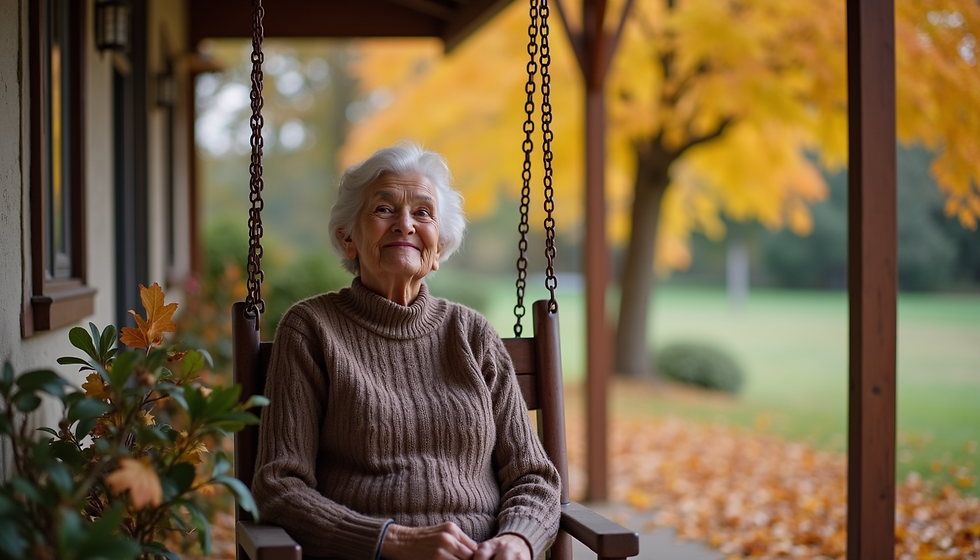Understanding Stages of Lung Cancer
- HC4S

- Dec 2, 2021
- 4 min read
Updated: Jan 27, 2022
When an individual is diagnosed with lung cancer, doctors will run tests to determine if cancer has spread and how much. This process is referred to as staging.
Staging ranges from zero to four, zero being minor and four being the most serious case. If a senior is deemed to be at stage zero, they are in the earliest stage and the cancer is in the beginning stage of spreading.
Every cancer patient has a unique experience. Doctors may designate a letter or number to provide more information about the stage of cancer. This allows doctors to have more information on how serious the cancer is and better categorize cancer stages. It is also beneficial when comparing other cancer patient cases because they tend to have a similar outlook. This is useful for providing statistics on survival based on severe the cancer is at certain points. Deciding on the best treatment plan can be narrowed down based on this information as well.

Determining the Stages of Cancer using the TNM System
The staging system used is Tumor Node Metastasis (TNM). TNM is based on identifying three important factors in establishing the severity of cancer.
Depending on the TNM findings, lung cancer may be diagnosed from stage zero to stage four. The higher the stage, the more advanced cancer.
Three main topics of the TNM system
Category T for tumor. Identifying the size of the tumor, whether it has spread, and where. What nearby structures or organs has cancer spread to?
Category N for nodes. Discovering if cancer has spread to nearby lymph nodes.
Category M for metastasis meaning the spread to distant sites. Has cancer spread to distant organs such as the brain, bones, adrenal glands, liver, or the other lung?
After all the information has been documented additional numbers or letters may follow to provide even more details surrounding the type of cancer. Information combined with the categories T, N, and M is called stage grouping to assign an overall stage. The higher the number the more advanced the cancer stage is.
Stages of Non-Small Cell Lung Cancer
NSCLC can be declared a clinical-stage or pathologic stage (surgical stage). The clinical stage is based on the results of a physical exam, biopsy, and imaging test. The pathologic stage is based on examining tissue that is removed during an operation.
Staging of Small Cell Lung Cancer
SCLC can be declared a limited-stage or extensive-stage.
Limited Stage Small Cell Lung Cancer
Limited stage small cell lung cancer is when the origin of the tumor is in the lungs. Cancer may spread to the lymph nodes above the collarbone or between the lungs.
Cancer in lymph nodes above the collarbone is called a supraclavicular node. As long as the lymph nodes are on the same side of the chest as cancer it is considered a limited stage. If cancer continues to spread past that point, it may be deemed an extensive stage. Mediastinal lymph nodes, located in the center of the chest may be considered limited-stage even when they are closer to the other side of the chest.
Extensive Stage Small Cell Lung Cancer
The extensive stage is when cancer has spread to other parts of the body beyond the limited stage. About 2 out of 3 people with SCLC have extensive-stage small cell lung cancer when their cancer is first found.
Treatments for Non-Small Cell Lung Cancer Based On Cancer Stage
Stage 0
This cancer hasn’t spread into lung tissue, so surgery is typically the sole treatment. In most cases, doctors may remove a wedge of lung tissue.
Stage 1
Surgery may be the only treatment needed for this stage. Sometimes a larger section of the lung may need to be removed. Chemotherapy or radiation therapy may be necessary after surgery if there is any indication of cancer near the edge of the removed lung or a lymph node.
Stage 2
Surgery may be necessary to remove the entire lung or a whole lobe of the lung. This surgery is oftentimes followed by chemotherapy. Following surgery, tests may be conducted to see if there have been any changes to the DNA in the cancer cells and if this has occurred target therapy may follow. Targeted therapy is a type of precision drug treatment used to attack the tumor cells.
Stage 3
It is common in this stage for doctors to order a combination of surgery, chemotherapy, radiation therapy, and targeted therapy. If certain types of proteins are discovered in cancer cells, immunotherapy may be another treatment. Immunotherapy utilizes the body’s ability to fight cancer by helping the immune system recognize and attack cancer cells.
Stage 4
Stage four cancer is the most advanced stage and is difficult to treat. Treatment options can vary and depends on the individual's response to the process.
Treatments for Small Cell Lung Cancer
Limited-Stage SCLC Treatment May Include:
Chemotherapy
Radiation therapy
Surgery
Extensive-Stage SCLC Primary Treatments Include:
Chemotherapy
Immunotherapy
Radiation therapy





Comments